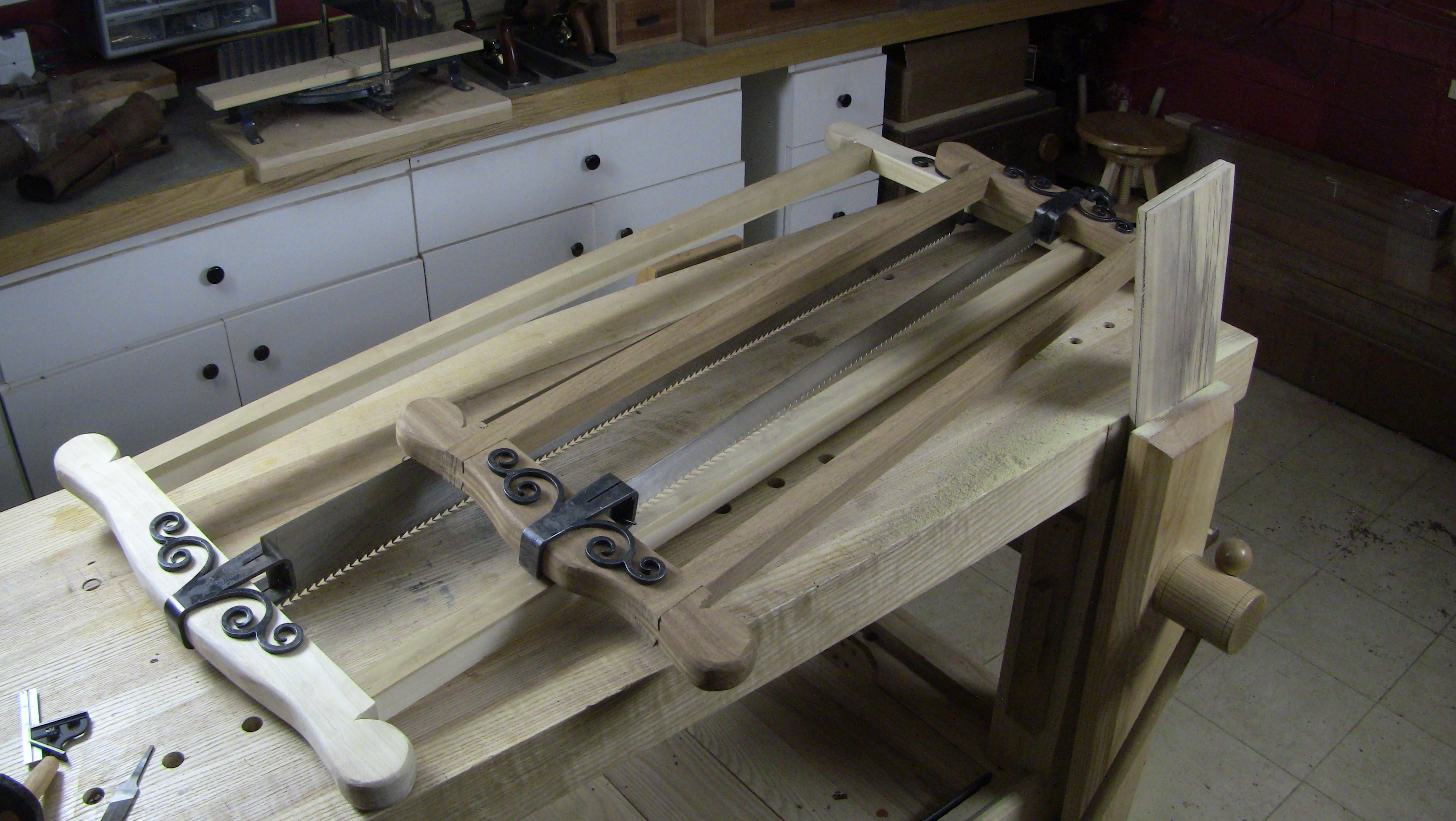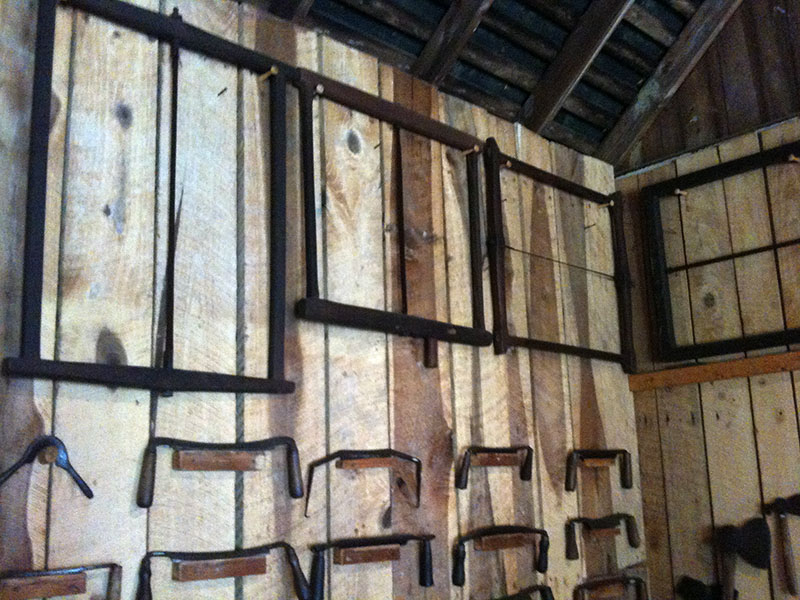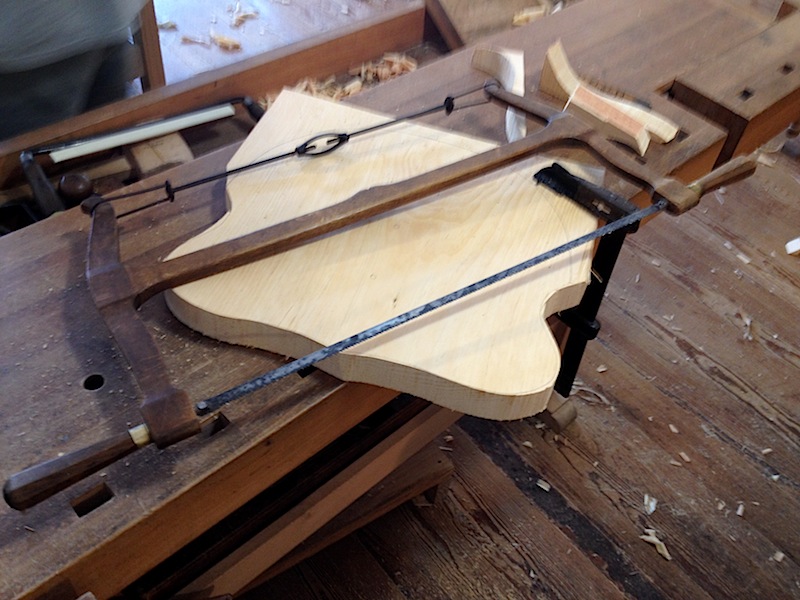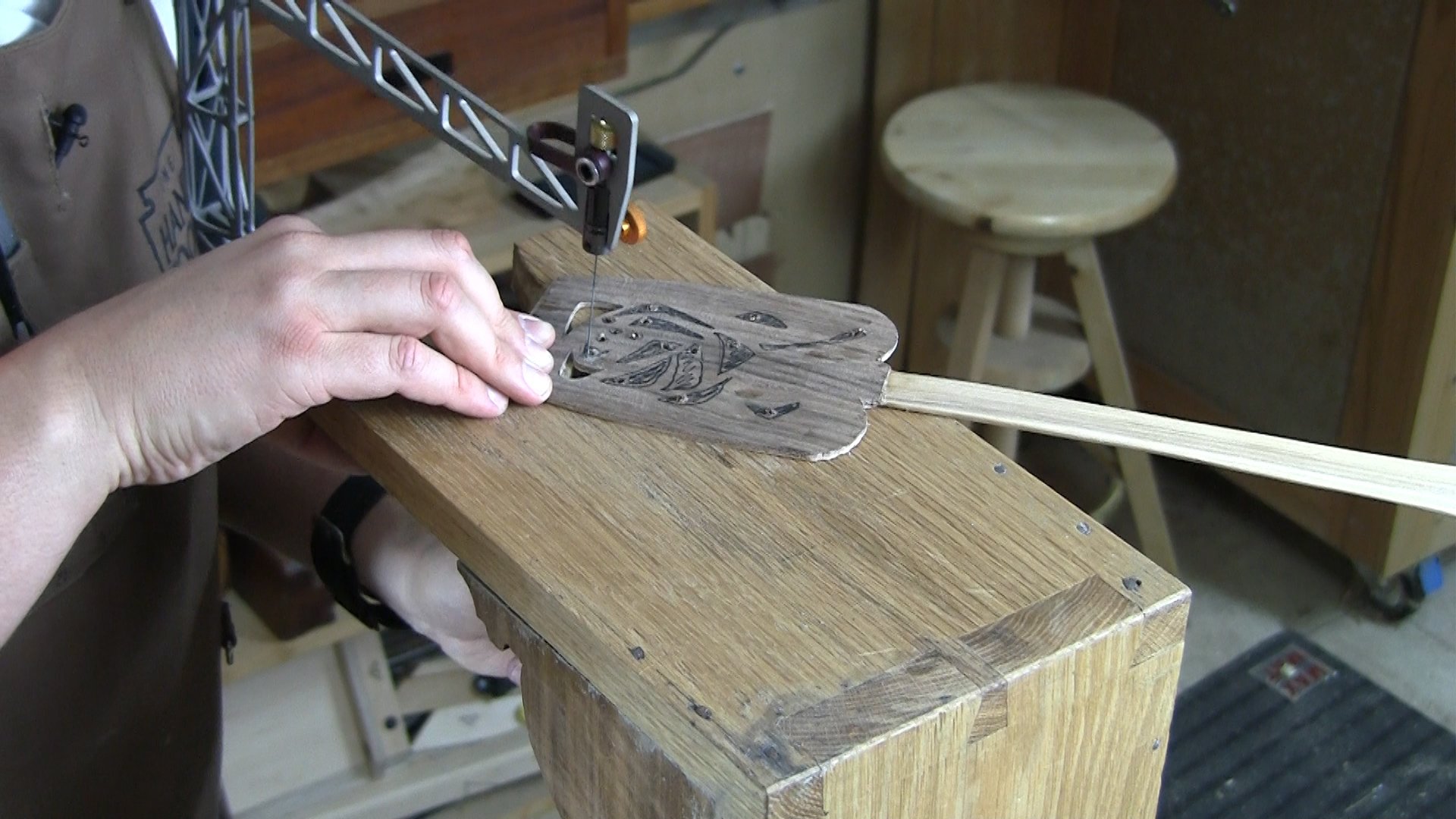Cutting Curves by Hand
How to Cut Curves by Hand
Adding curves to your projects are twofold. First you have to cut or shape the curve. Second you have to refine the curve back to your line and smooth it for finishing. In this broadcast I will focus on the tools and techniques for cutting curves by hand; specifically using a turning saw and fret saw.
Frame Saw 101: Many Saws with the Same Name
The general term for a saw blade held in tension on a wooden frame is appropriately enough, a frame saw. But this is more the category of saw and each variation has its own name.
Frame Saw: yep this is confusing but the large 36-48" saws used for resawing we also called frame saws. So not only the overall category but also this specific use tool. These incorporate very coarse toothed blades and eat wood like nobody's business.
Sash saw is a common term for a larger frame saw that was used for cutting window sash. It was also called a window saw not just for the intended use but because the frame itself looks a lot like a window. These incorporate 24-36" long blades and have a wider blade around 1-1.5" that can be used for ripping and even joinery. The continental woodworkers used these saws as their mainstays for stock breakdown and cutting larger joinery.
Bow Saw is what we call the next smallest version with a blade anywhere from 18-24" long. Usually narrower blade in the 3/8 to 1/2" range and pitched 7-10 ppi. These blades do cut curves nicely and deal with heavier stock greater than 1" and up to 2-3" thick.
Turning Saw is the 12" long blade model with a fine blade usually 1/8 to 1/4"wide and pitched quite fine from 10-22 ppi. The very narrow blade cuts very tight curves yet the longer blade allows for fast cutting and efficient clearing of dust in longer, sweeping curves in stock up to about 1" thick. This is the mainstay for curve cutting in the typical shop.
Coping and Fret Saws I am lumping together as these saws usually both incorporate a blade about 6" long and quite narrow from 1/8 down to tiny tiny, who can actually measure that width blade. They can be used to refine joinery in making cope cuts to cutting very fine fretwork and marquetry. The blades here are fragile so you will want to buy these in bulk to have around for when you break them. Mostly because they heat up fast.
How to Use a Turning Saw
Whether we are talking about using a larger bow saw, the more delicate turning saw, or even the precise fret saw, there are some rules of thumb that you should follow. All of the following points when followed with make your curve cutting go smoother...literally. And you won't be afraid to use the turning saw and to incorporate more curves into your projects.
Following these points ensures the saw blade is cutting most efficiently. Basically this means the teeth are clearing saw dust fast enough to keep the teeth cutting. When saw dust builds up the saw vibrates, heats, up, and deviates from your planned path. In short, excess sawdust makes it really hard to control the cut and you end up with a jagged line. Usually this means we cut far away from our line because we are afraid of the unpredictable cut and end up with so much more work to do with other tools later.
Watch these Project Videos to See More Curve Cutting in Action
Learn More in The Hand Tool School
In The Hand Tool School I have hundreds of hours of video that specifically shows how to cut curves. Several full scale projects where the turning saw is the star. If you want to improve your skills and throw curves into your project, this is the place to be. In fact, Semester 2 is dedicated to cutting curves entirely
So I have a deal: use "rwwlive" to save 10% at The Hand Tool School








